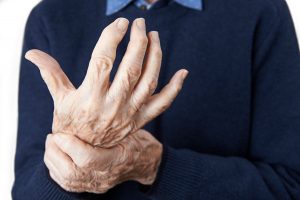
DAVE WATTS, MD
Orthopedic Surgeon
What is osteoarthritis and what are the signs and symptoms?

It happens all the time: You think you’re going in for nothing more than a run-of-the-mill sprained ankle treatment or looking for pain management for knee injuries, and suddenly you find yourself with an osteoarthritis diagnosis. Unfortunately, when it comes to osteoarthritis, symptoms tend to take their time creeping up on patients, resulting in joint degeneration and chronic pain. So how do you know if you have osteoarthritis or a simple sprain? Before consulting with your local Sioux Falls orthopedic surgeons for treatment, you’ll want to know a bit more about what osteoarthritis looks like. If you think you’re suffering from osteoarthritis, here are a few symptoms to be aware of.
Osteoarthritis is Gradual Joint Degeneration
Like osteoporosis, osteoarthritis involves the weakening of bones over time. However, unlike osteoporosis, osteoarthritis creates this gradual weakening through the deterioration of cartilage in between fingers and toe joints. When this cartilage starts to weaken, it can cause “grinding” of bones in the hand or create bits of floating cartilage that get stuck and create an unpleasant stiffness.
It Can Look (and Feel) Like Rheumatoid Arthritis
While rheumatoid arthritis can look and feel a lot like osteoarthritis, the main difference between them has to do with timing. While osteoarthritis comes on more slowly as a result of aging and gradual deterioration, rheumatoid arthritis can bring about the same symptoms very suddenly, as a result of the body’s immune system spinning out of control.
Look Out for Bumps and Deformities
When you have osteoarthritis, you’ll notice the usual symptoms associated with joint pain, such as swelling, chronic pain, and inflammation. However, one of the more common and specific symptoms has to do with the formation of bumps on the hands, feet, knees, or shoulders, These bumps can be bits of cartilage that have broken off and grown inflamed. They can also be a sign of joint deformity. While these bumps might not be painful to touch, they can be standing in the way of your joints healing or regenerating properly and should be seen by a doctor immediately.
Keep Track of Pain and Tenderness
With any joint deterioration, chronic pain is par for the course. If you have osteoarthritis, you’re likely to feel this pain creep up in your hands, feet, knees, or back during periods of extended use. As with regular arthritis, the pain may be exacerbated during a drop in temperature or after a day of vigorous physical activity. If you notice that the pain isn’t going away after resting, or that you wake up with stiffness in your joints that doesn’t disappear after a half hour or so, you could be dealing with the early signs of osteoarthritis.
Be Aware of Motion Range
Certain injuries involving joints, such as a rotator cuff tear or knee injury, can result in a limited range of motion. With osteoarthritis, a loss of motion range can be even more subtle. Keep track of your fingers and toes and try to do a few basic exercises each morning. See if you’re able to keep your joints moving and performing normally without pain. If you notice a stiffness that’s making it hard to perform everyday activities, it’s time to see a doctor.